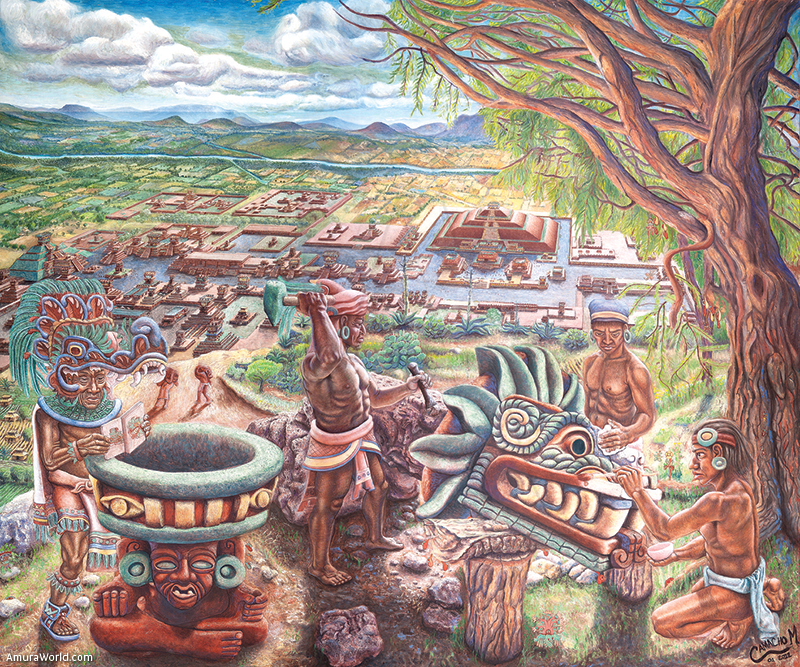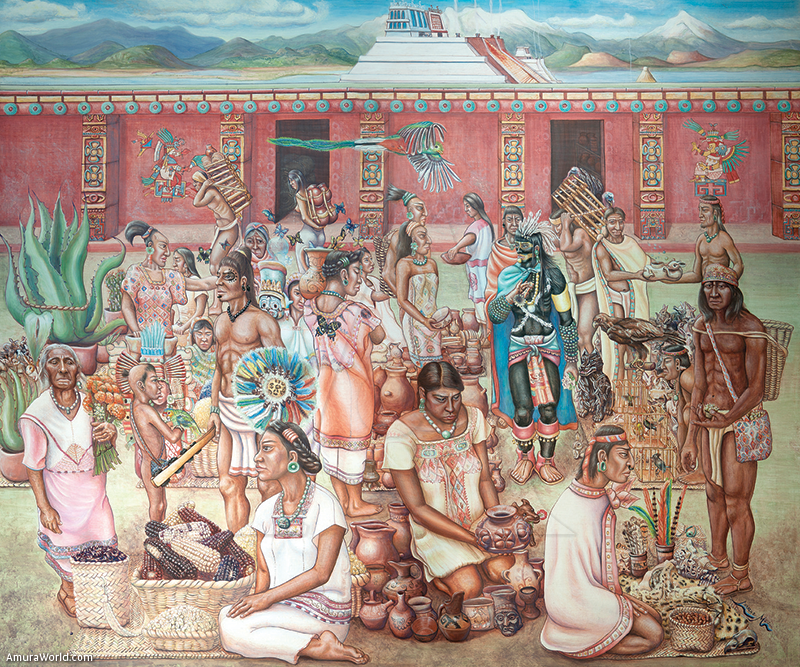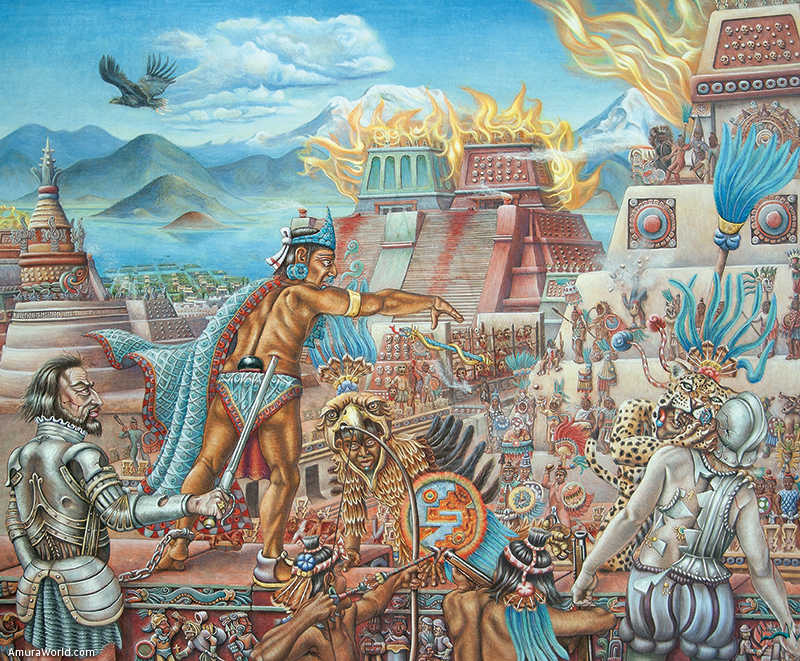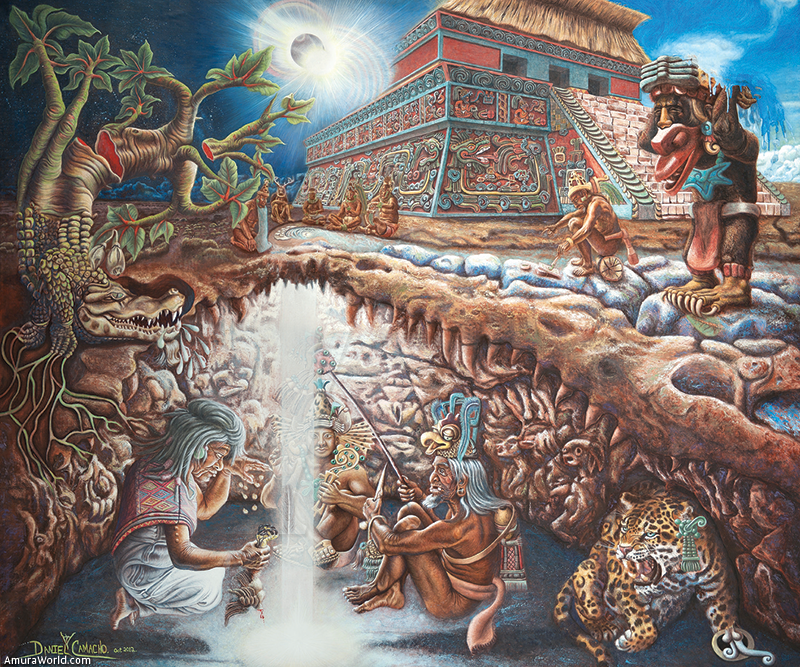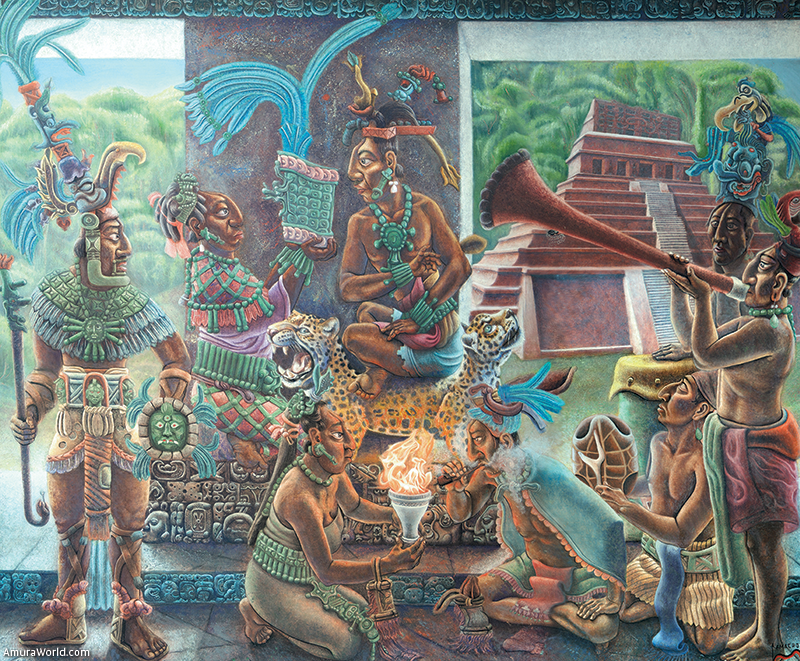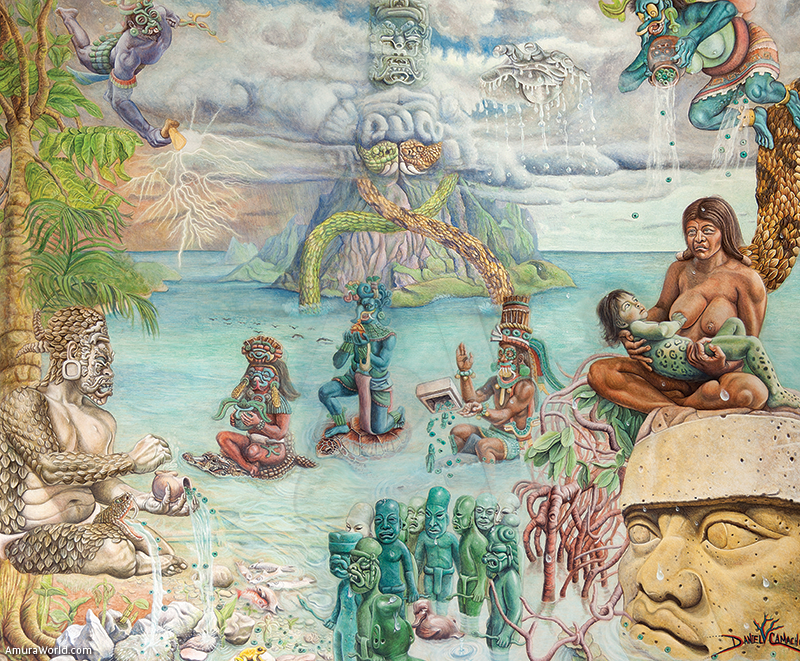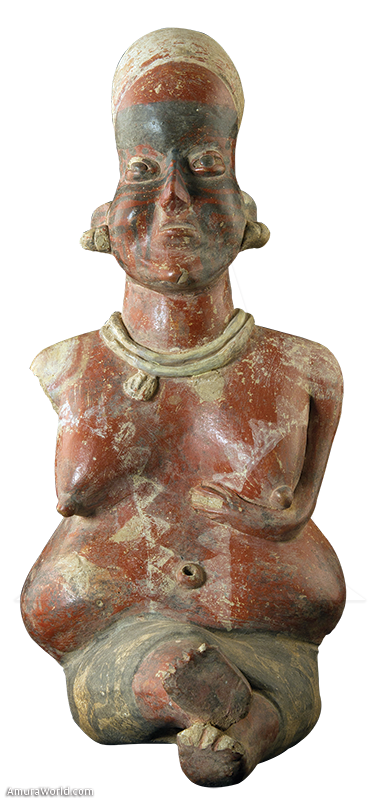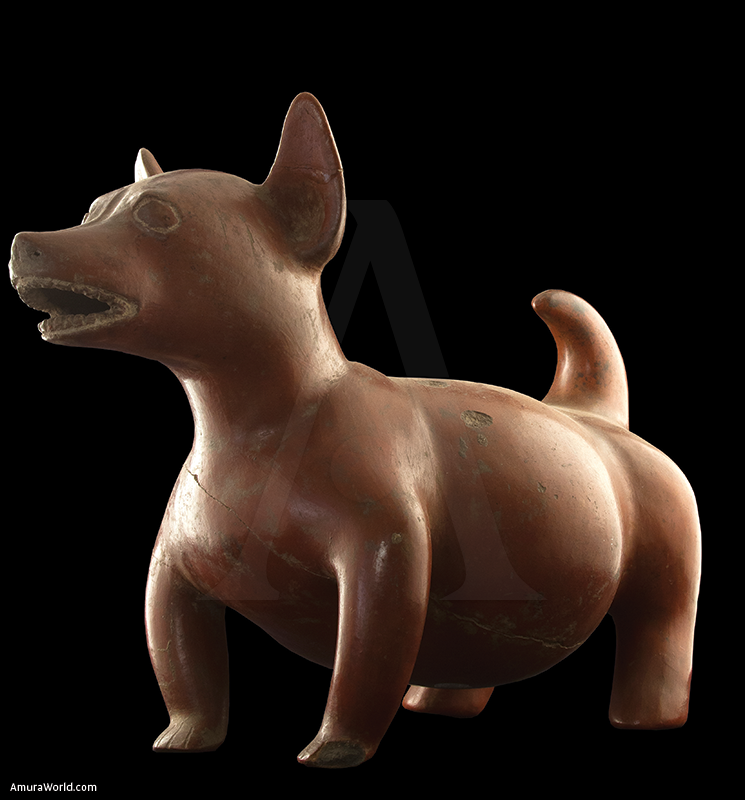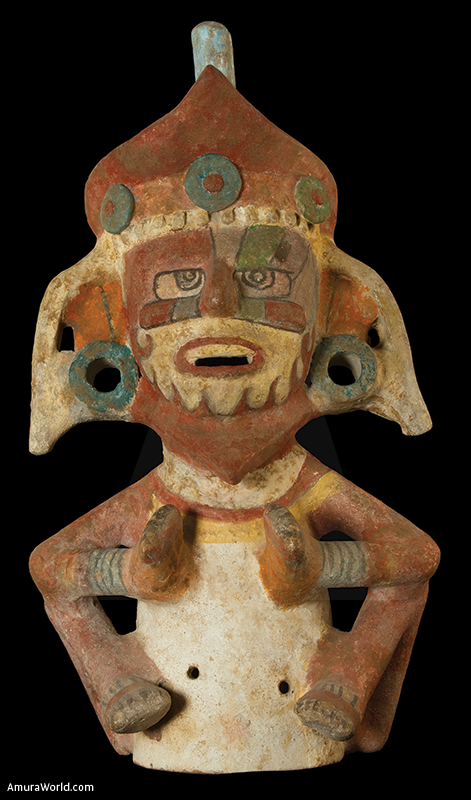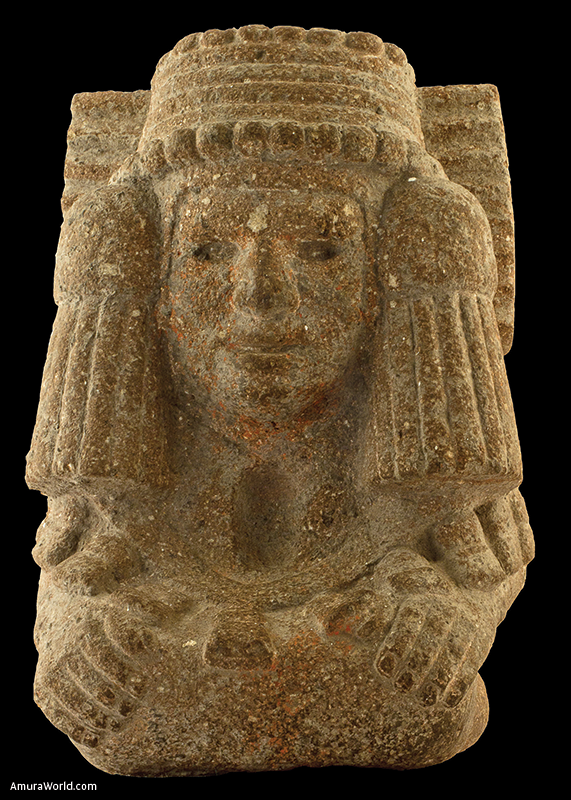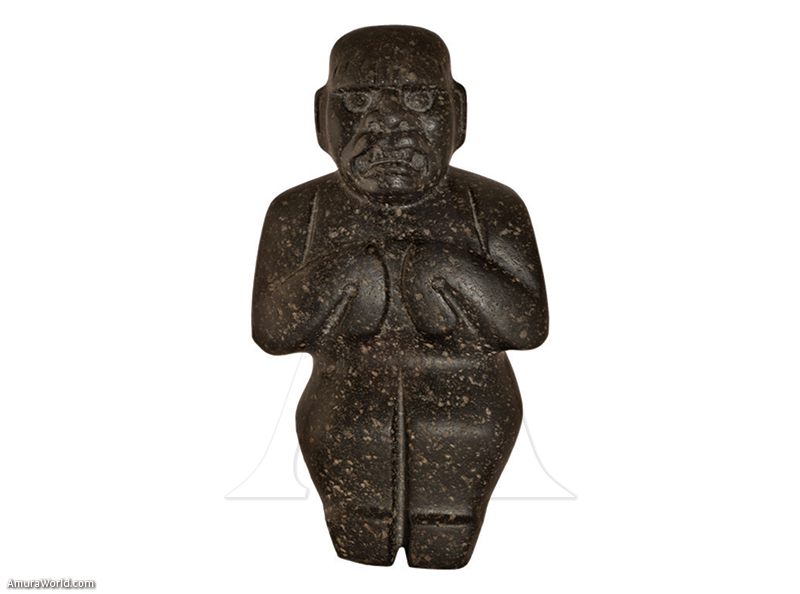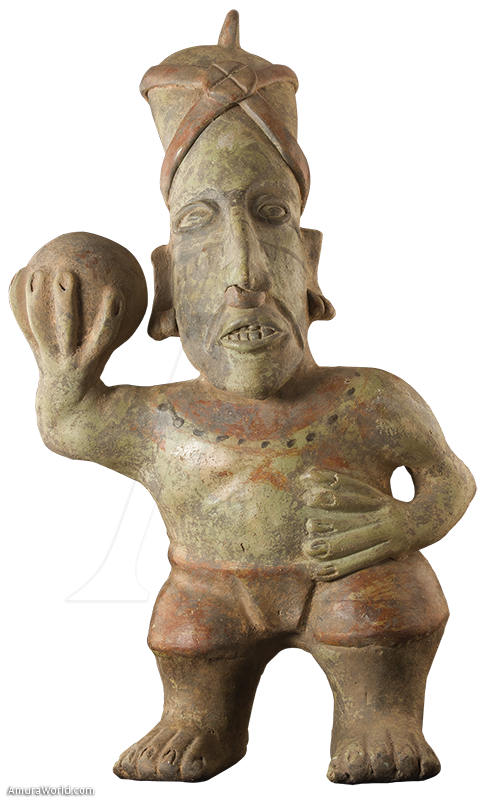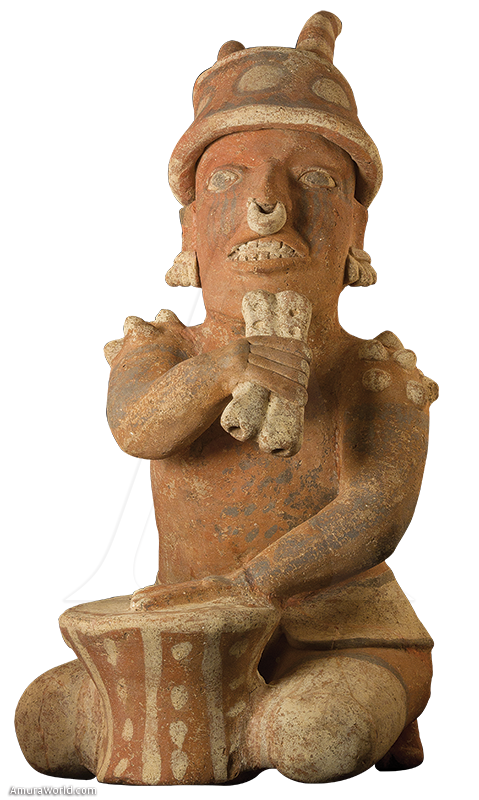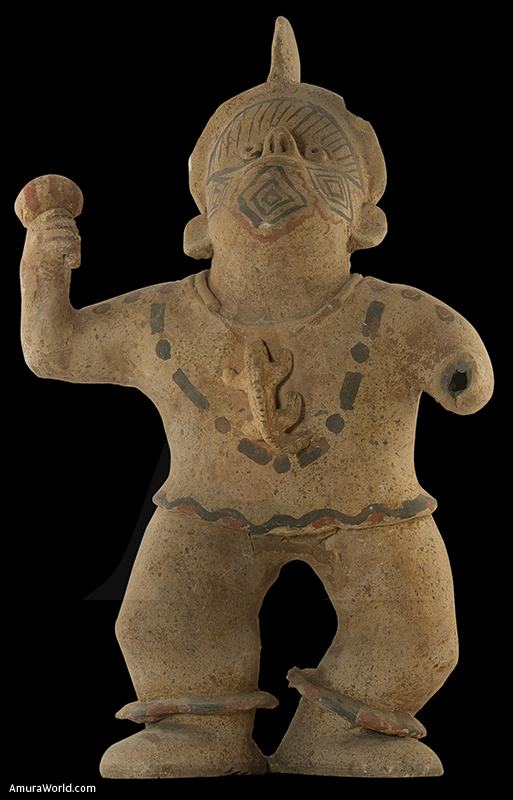The mistakenly called Armella Spitalier collection would have no reason of existing if it was not meant to be shared universally. Today I’m sure it’s still the only pre-Columbian sample that can be visited from every corner of the planet earth.
Inspired a little by my parents and a little more by my uncle Mario Armella Maza, I became involved with art with great passion, it’s objects and the history they carried in their context. But not only that kept me close to the pre-Columbian, my own school, the “Americas University”, located at Cholula Puebla, cradle of the Mixteco-Cholulteca civilization, where with already acquired knowledge on the foundations laid nearby “Tepepan” my uncle built architectonic works, and the weekend visits to Teotihuacan or Xochicalco, which are located on the surrounding area of Mexico city, were how the cultural heritage authorized by INAH began to nourish.
In Mexico everyone has pieces, most of the people only know they are old, they ignore the time period and every now and then make up a use, and they attribute it to a culture or a certain group and very often talk about fantastic anecdotes of how the piece got to their hands. Most of these people have found them incidentally during their lives. Almost always in small groups of pieces and also frequently they are from the same ceramic family. But there are times in which the gatherer is old in age and knows of the law promulgated by President Luis Echeverria Alvarez; this person legally owns the pieces, meaning that they are authorized formally by the competent authority, INAH. It’s in those cases that the following happens; the cult man that kept his collection safe from accidents, who comes to think of death and preoccupied with the good safekeeping of the collection which is also the result of anecdotes and adventures lived when he was young and would travel great distances, visiting various archaeological sites in our wonderful Mexican Republic.
What is to become of them?.. We must take into account that it is real and one knows it, nobody cares as much as the holder and I call him a holder and not a collector since one can’t collect what is forbidden to buy or sell and is punishable with up to 20 years in prison. What to do with them?.. with full conscious that the pieces will continue their journey into the future in search of one, as the master, where will he leave such a valuable treasure.
Three times have those who gather; have valued what we do not only do we care for the pieces, we study them, we photograph them and publish tem, meaning that we give mobile archaeology the mobility of the internet, with millions of pixels photographers illustrate the writings of expert archaeologists, which translated into English, French and German communicating to the public the greatness of our past, making known the uses and customs, the architecture, the art from the places that surround our development since the Olmec formative period until the birth of the great Tenochtitlan. At the speed of the internet today and only in Mexico we have achieved to freely place up to one million times at the disposal of the public the forty titles that integrate our “Electronic Mesoamerican Library” which offers a chance to the holder (not collector) of transcending his efforts in the sense that he would be sharing through the Fundacion Cultural Armella Spitalier his passion for Mexican archaeology.
The editorial branch of the foundation has produced forty five themes, which are available in the following libraries, as well as in 14 international distributors, of educational material, only eleven years after the project began.
The itinerant exhibits keep alive the policy of sharing the cultural richness in a real manner. This is how the group devoted to their promotion has already twelve of them, all of them within the Republic.
We are currently curating an exhibit that will be called “Ofrendas ancestrales funerarias”, which has a printed informative brochure. After sponsoring painter Victor Daniel Camacho for three years, he produced seven painting entitled: The tianguis of Tlatelolco, The rendition of Moctezuma, Teotihuacan; The Tajin and the new ballgame; Xochicalco, calendar adjustment 64; Pacal coronation; The creation of the Olmec man. We have inaugurated a mixed exhibit in the sense that we have placed the seven original painting with pieces allusive to each painting.
On the year 2008 at CENART, we held a “Panel exhibit”, an economic way of presenting an exhibit printed out in canvas panels, where we printed a great amount of images and information which was then placed in a school ambiance for instance on the school yard, because during recess students explore on their own the information captured in there. During our experiment 60 children walked through the designated space, they remained there for a while and afterwards they were asked five questions regarding the information on the panels obtaining an average of assertiveness in the order of 7.5 when they only stayed for a period of 15 minutes, proving and demonstrating a new way of learning, which made FCAS worthy of a recognition granted by the Ministry of Education (SEP).
Long distance education is the new thing and the Fundacion Cultural Armella Spitalier has taken the opportunity to make an incursion in it. In collaboration with the San Diego State University, we have developed and tested, with excellent results, a bilingual course, in Spanish and English, for long distance students. With a number of 196 attendees or students in various places of the planet such as two American soldiers prominent in Afghanistan who passed with A+ the course entitled “Mexicas” which was thought in 45’ classes each two times a week, it was thought in multimedia through the internet last year.
This success in our experience in long distance education took us to make a proposition to the Ministry of Education in Mexico (SEP) to develop a Mexicas course for the fourth grade of elementary school which we hope will be used soon, in order to introduce in Mexico that which with so much success is being developed in more developed countries; we are convinced that if we are competitive in educational quality with the world, we will then be qualified to compete in the workforce and technology.
Steve Jobs and the iPad
It was the year 2003 when during the “Diseño en el arte precolombino” exhibit I met Eng. Carlos Kubli Garcia who I caught, one day in the middle of the week, photographing the display cabinets of the exhibit shown, for which I warned him, without knowing him yet, that it was forbidden to take photographs without due authorization from INAH and the payment of the corresponding taxes; after sanctioning the photograph he rudely responded I should warn his boss, the director of the Palacio de Mineria, who back then was Elia Macedo de la Concha, sister of Attorney General Rafael Macedo de la Concha, it was Eng. Kubli who on that lucky day told me about the development of the iPad, he had just come back from Cambridge England after studding a masters in “Assisted computer development”, from that moment on I understood that to invest in the development of “multimedia educational contents” would make for a safe investment in a medium term and it was him who directed the project from that moment and until the presentation of the iPad and the iPhone in 2006 by Steve Jobs, it was then that libraries began to develop their electronic areas, the eBook was born.
New technologies had made room for the birth of new ways of learning, this is why for some time now libraries have opened an electronic area where thousands and thousands of texts reside, waiting to be consulted electronically; the hard cover book hasn’t been, and I don’t’ think it will be, replaced, at least in the medium term, nevertheless the electronic book is breaking records every day. The eBook offers today the opportunity to be read immediately anywhere in the planet. It’s the great libraries such as the Congress Library of The United States the ones that give us this data, ancient books have been scanned by Google and today Amazon is the largest distributor of titles in the world, competing with Cengage Learning and Ebsco, Sony, Barnes & Noble and many others for a new market of immeasurable dimensions, still being immense it will certainly keep growing without ever stopping. Ebsco says it possesses 90% of the American library market as costumers and in Europe they say they are close to 92%, the marketing begins with the offer of inventory, packages are sold with determined contents at very low prices, for example the Fundacion Cultural Armella Spitalier has today at the disposal of all users of the National Library Coordination which are seven thousand and one hundred units 52 titles in Spanish up to a million times for $12,000.00 pesos.
The no collecting and the black market
The conservation of an archive small as it may be requires certain care such as a space with no sunlight, where the pieces can rest in amplitude, meaning enough room so they won’t be in contact and so they can not only be seen but arranged by culture and time period, accessible to the sight and touch, preferably with controlled humidity since the clay works taking and releasing humidity, we must also consider that as ancient as they are and as little burned as they are, since the oven became known until later times, at ground level in fires with flammable woods such as branches and other woods they tend to open without the need of touch, just with time, so the care sometimes requires to conserve them for which a reversible glue is used, since it is universally regulated to leave the restoration visible whether on the inside or the outside as long as you have at least 2/3 of the piece. The Venice Convention celebrated by the end of the XIX century accorded it amongst museum restores of that time.
Another convention of which Mexico is part along with other 32 nations took place in Paris, because of the looting of the cultural and historical inheritance originated by the Second World War, since then the black market prices increased, generally because soldiers stole and sold what they had taken as war trophies from the defeated countries.
This is how they began to appear in auctions in Europe and the United States, ancient object of excellent manufacture that formed enormous collections that were subtracted and auctioned mainly in antique houses such as Drouot in Paris which has made so much money of stolen art, that the auction house is actually inside the hotel of the same name; other houses such as Christie’s and Sotheby’s, transfer the property of so many pieces that they hold up to two auctions a year, with the publishing of succulent catalogues that marking only the exit prices have reached superlative records in regards to the prices they have achieved lately, not only with genuine pieces but in a percentage, that I would call elevated, with professional fakes of which the sell records call for attention and even cause a few laughs. Nevertheless and not withstanding that Mexico is part of the treaty we do not obtain the results we hope for, I must clarify that in 2012 the legal department of the Ministry of Foreign Affairs (SRE) achieved after attaining the matter for a long time the repatriation of over 600 pieces that were illegally subtracted.
But there is a way to reduce the purchase volume so much that it will only be attractive to Binoche and Giuello or Santino, to sell only a few only and exclusively to private collectors. This of course if INAH would broaden the universe of borrowers considering museums and cultural institutions that will justify amongst other things to have them under their care to promote and show what is ours.
Considering that the increase on demand has elevated the prices to a level that antique dealers talk about the great investment of pre-Columbian Mesoamerican pieces in Antique magazines as advertised in the august 2011 magazine bought at the Branly Museum in Paris, which published the House Drouot auction where a stucco piece made recently with natural pigments reached the extravagant amount of 4.2 million American dollars. That piece was shown before in an exhibit at the city of Bologna Italy and it was published on the 1994 catalogue as well as in an art book and some other event so then with a “past” it could be auctioned at this record price as House Binoche announces it on the Drouot Gazette. This is where the 1970 Convention can help stop such effects when we realize that most of the buyers are institutions represented by experts that having looked through the previously published auction catalogues come on the right day with orders from their superiors to purchase notwithstanding the price and so they will bid in the auction until the object in question belongs to them.
It’s important to clarify that museums with “boards of friends” give donations that subtracted from their taxes help amongst other things to pay for the salaries of the buyer to acquire and broaden their collections would be delighted to suspend their buying if INAH would exhibit the collection that rests today in storehouses and would borrow it to museums that would otherwise enlarge their collections in auction houses such as Barakat which with offices in Asia, Europe and America tended to by father and son published on their website pieces that while in the local market have prices of a few hundred dollars in abstract amounts to say the least above many hundreds of thousands of Euros. Which makes it encouraging to think that if 90 percent of the acquisitions are made by institutions that encourage the elevation of prices of the piece, it would be suspended at the moment, if it no longer costs for institutions to have them on display.
On the other hand, the internal market not only originates from modern or current looting, but from collections made in the past, by Europeans that have passed away and that like Lorenzo Boturini appreciated enormously the quality and artistic value of the pieces from different ancient Mesoamerican cultures.
This is how the material began to exit since distant times only to mention a few collections we can emphasize the one from Ernest Ericsson or Michel and David Rockefeller or the one from Dumbarton Oaks in Washington or the one at the Museum of Art of Chicago or the one from Denver Colorado or the one from the Michael C. Carlos Museum at the University of Atlanta Georgia or the one from the Smithsonian Museum or the Mesoamerican Hall at the British Museum or so many others in Boston, Houston, Austin Texas, Israel etc.
If we don’t do something like influencing the 1970 treaty or about the heirs of the “collectors” of these collections that were built before 1970, which are most of the times sold once they clean out their houses, after they die or the market will persist on its ways and the dealers will continue to photograph “collections” in houses of European descendants of temporary migrants that state today and always that once their grandparent became repatriated he brought back the collection before 1970 previous to his death that collection as is the case of the just auctioned collection by House Sotheby’s in Paris which marked a new record with a piece sold in 3.2 million dollars from the Classic Chupicuaro to which they added a legend in regards to its scarcity and originality and how it was unlikely to obtain others like it, because this Guanajuato region has been flooded for some time when the construction on this lands of the “Solis Dam” took place that together with the fact that the logo of the Quai Branly Museum has a piece just like this one.
It’s a fight with no quarrel on one side the looting fomented by attractive prices in foreign countries but considering that a high percentage of the demand is created by institutions that will bid to improve their collections in order to exhibit better things we would have to, like I said before, design a methodology so they could bid on an inventory of pieces the state has in such a way that on one hand we could fight looting and showcase all this pieces that no one has, not even restored. On the other hand it should be on the mind of many people and institutions no just from tourism to awaken the attractiveness of coming to Mexico with the enormous publicity that this project would create.
Passion for private collecting has already taken a hit with the publicity from INAH and the Ministry of Foreign Affairs (SRE) on the forgery of the pieces with material and handmade labor and many times native to manufacture as was done with pieces like the one auctioned at Drouot three years ago for 4.2 millions of dollars continuing to affect the nature of the pieces with news on the paper has been of great help to place doubt in the minds of inexpert buyers about the authenticity of the pieces. To criminally prosecute the owners of the auction houses would put the bad compatriots that make the sells up to speed in regards to the risk they take in doing so.
Mexico must take cards on the matter in a more energetic way since the years keep passing by and auctions come and go with no integral respect for the treaties meant for that purpose.
Text: Lic. Carlos Armella Sánchez / Víctor Daniel Camacho Maldonado / Natalia Ramos Garay/ Mariana Castro Armella ± Photo: Berenice Ceja Juárez / Sofía Armella Spitalier

